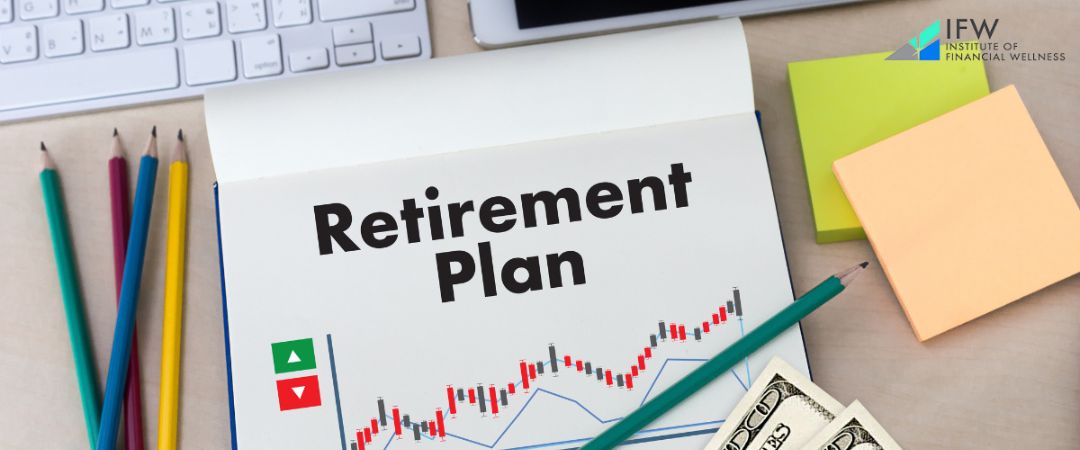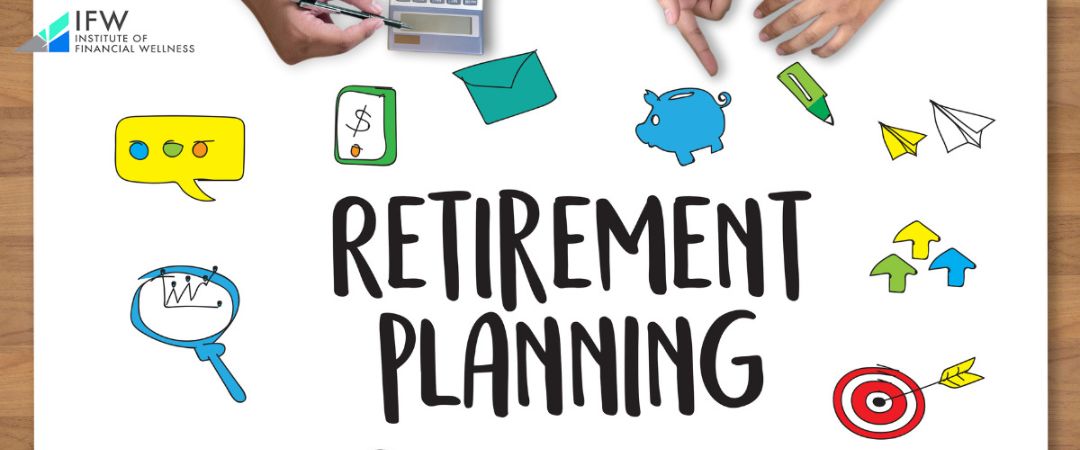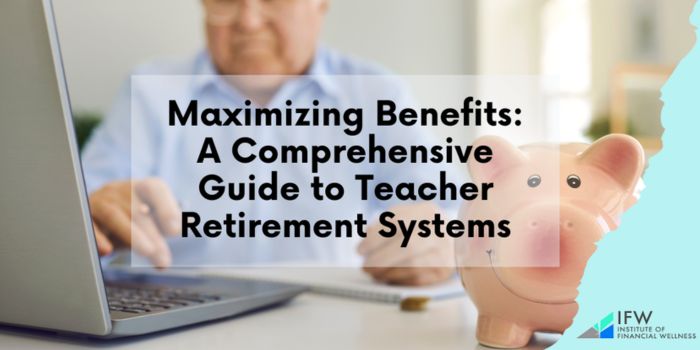-“Retirement: World’s longest coffee break.” – Author Unknown
Are you an educator approaching retirement or planning for your future? Understanding teacher retirement systems is vital to maximizing your benefits and securing financial peace in your golden years. We’re ready to provide you with a thorough look at the retirement plans available, including defined benefit plans, defined contribution plans, combining savings, understanding Social Security implications, and the advantages of various retirement accounts specifically for teachers with the help of the best retirement roadmap services.
Key Takeaways
- Teacher Appreciation Week is a significant time dedicated to honoring educators for their dedication and impact on society, with events set to celebrate their efforts annually in May.
- Understanding retirement systems is essential for educators, with options like defined benefit plans and defined contribution plans such as 403(b) and 457(b), which require careful planning and consideration of economic factors and policy changes.
- Educators must actively engage in comprehensive financial planning, considering various retirement savings options, Social Security benefits complexities, school district policies impact, healthcare costs, and utilizing financial planning resources and tools.
Teacher Appreciation Week


Teacher Appreciation Week in May is a period set aside to honor the commitment and hard work of public school educators and teachers throughout our nation. From May 6th through the 10th in 2024, with Teacher Appreciation Day specifically recognized on May 7th, we dedicate time to acknowledge these professionals for their significant contributions [1].
The importance of this week extends beyond merely recognizing teachers as employees. It serves as an expression of gratitude toward them for carrying the beacon of knowledge and progress. Public school teachers are not only educators but also sources of inspiration who encourage continual learning and personal development. During Teacher Appreciation. Week, we celebrate these individuals who profoundly influence our lives daily—a modest recognition for those who tirelessly contribute to shaping society’s future.
Why Teachers Deserve Teacher Appreciation Week
Consider the immense dedication exhibited by numerous educators in their profession, which is a prime reason for celebrating Teacher Appreciation Week. Teachers are known to arrive early and stay late at school, often extending into weekends. They invest this time diligently crafting lesson plans, marking assignments, and setting up their classrooms to foster an optimal learning environment for the next day.
Teachers bear a significant financial burden when it comes to providing educational materials. Approximately 94% of them dip into their own pockets to supply classroom necessities. Despite sometimes receiving lower wages than individuals with merely a high school education, they persistently contribute their personal resources—time and money alike—to nurture students’ growth out of sheer love for teaching and devotion to student achievement [2].
The significance of teachers lies at the core of our community’s advancement—they are truly society’s foundation pillars. Every professional who has found success can trace part of that triumph back to lessons learned from a teacher during formative years across varied fields, including medicine, law enforcement engineering, or retail management, starting inside classroom walls. As such, honoring these unheralded champions through a dedicated celebration one week each year represents just minimal recognition deservedly owed, recognizing the steadfast commitment and relentless efforts throughout the course of educating future generations.
Exploring Teacher Retirement Systems

Educators, as vital contributors to our community, are entitled to a secure retirement. They can achieve this by participating in key retirement systems such as defined benefit plans and defined contribution plans. Defined benefit plans provide educators with a consistent monthly income post-retirement calculated by their salary history and length of service. Conversely, the outcome of defined contribution options like 403(b) and 457(b) depends on individual contributions made over time along with investment performance.
Yet, for teachers, comprehending the complexities involved in securing retirement benefits is not always easy due to fluctuations in economic conditions and adjustments in policies affecting these benefits. It’s especially important nowadays that teachers stay informed about their pensions since some states are reassessing their pension promises owing to increasing liabilities without sufficient funding earmarked for them.
Defined Benefit Pensions

Defined benefit pensions are retirement plans sponsored by employers that guarantee a predetermined monthly benefit for retirees. These benefits depend on the number of years an educator has worked and their earnings prior to retiring. In these plans, both educators, such as teachers, and their respective employers make contributions based on a percentage of the teacher’s salary into this pension fund. The Teachers Retirement System (TRS) in Florida is one example where eligible teachers receive a lifetime annuity after they retire [3].
Despite offering stable income post-retirement, these pensions have constraints like limited transferability between jobs and varying state-by-state regulations affecting the level of benefits received. When educators switch jobs or move across states, it can result in losing service time, which could decrease future pension payouts. To address such issues, many states provide options for teachers to buy additional service credits to recover some of the lost time towards their retirement accounts.
Defined Contribution Plans
Unlike defined benefit pensions, educators have the option to contribute pre-tax income towards their retirement through defined contribution plans, including 403(b) and 457(b). These arrangements are similar in nature to a standard 401(k) plan, providing traditional and Roth account variations. Each variation delivers distinct advantages and factors for participants’ consideration. The maximum yearly contributions allowed by these plans are established by the Internal Revenue Service. As of 2024, both the 403(b) and 457(b) have set this limit at $23,000.
Within such retirement schemes, there are an array of investment choices available to educators comprising mutual funds and annuities. Due to fees and expenses possibly eroding investment earnings within these accounts significantly over time, it’s crucial for those enrolled in either a 403(b) or a 457(b) plan to scrutinize their selected investments thoroughly with an aim toward optimizing returns on their saved funds earmarked for post-working years.
Crafting a Strong Retirement Plan

Crafting a robust retirement plan is essential for educators aiming for both security and comfort during their retirement years. It’s recommended that educators set aside around 15% of their earnings to build a substantial financial base as they approach this new chapter in life. Grasping the various advantages each retirement program offers is crucial, allowing them to make choices that align with additional investment options, thereby enhancing their savings strategy.
For those looking to expand beyond standard offerings, there are several accounts available that can be considered by educators. Remember that our financial advisors at The Institute of Financial Wellness can guide you through your retirement journey and retirement roadmap creation.
- Traditional Individual Retirement Accounts (IRAs)
- Roth IRAs
- Simplified Employee Pension (SEP) IRAs
- Health savings accounts (HSAs)
- Taxable brokerage accounts
Lastly, it’s important for educators to take into account how income generated after entering retirement might influence their long-term financial stability. This consideration ensures any post-retirement employment complements rather than compromises the pursuit of sustaining a secure nest egg well into later life.
Combining Pension with Other Savings

Pensions play a critical role in the retirement benefits for teachers, yet they may not suffice to fully support post-retirement life. Educators are, therefore, advised to augment their pensions by contributing to savings plans such as 403(b) and 457(b). A notable advantage of the 403(b) plan is that it often includes contributions matched by employers, while a 457(b) plan offers educators options for early or phased retirement.
Pension benefits tend to be structured in a manner that rewards longevity in teaching careers by increasing benefits later on. By thoughtfully integrating these pension benefits with additional savings strategies, educators can secure themselves a more comfortable and financially stable retirement.
Investment Options Within Retirement Plans

Educators looking to enhance their retirement savings should not only rely on pension benefits and defined contribution plans but also delve into the array of investment options available within these plans. It’s crucial for them to scrutinize different investments, weighing the fees tied with non-employer-matched 403(b) or 457(b) contributions against those of alternatives like IRAs to ensure they’re making savvy financial choices.
It is imperative that educators:
- Inquire about any remuneration vendors receive for distributing investment products
- Be aware of fines linked with modifications in their investment selections as a safeguard from unforeseen expenses
- Broaden their retirement savings by strategically channeling extra funds into separate investments. By doing so, they can avoid typical mistakes and augment their nest egg while adhering meticulously to guidelines instituted by the Securities and Exchange Commission.
Understanding Social Security Benefits for Educators
Most retirement plans consider social security benefits to be a crucial component. When it comes to public school teachers, their situation can be more complex. The accessibility of social security benefits for these educators is influenced by the policies set forth by each state and individual school district, which are often guided by what’s known as Section 218 Agreements. Initially, Social Security did not cover public school employees such as teachers. This changed with amendments made in 1950 that gave states the option to provide social security coverage for their public employees.
In the current landscape, states fall into different categories regarding how they handle Social Security coverage for teachers: there are those that have opted in and offer coverage, others that opt out of providing any sort of benefit, and then some adopt a mixed policy allowing choices at the level of each school district. For example, Missouri typically doesn’t grant full-time teachers access to Social Security benefits, whereas part-time educators may receive them. Broadly speaking, around 40% of all public school instructors throughout various states do not enjoy the safety net provided by Social Security coverage upon retirement.
Navigating the Government Pension Offset
In the realm of retirement planning, it is crucial for teachers to be well-informed about how the Government Pension Offset (GPO) can influence their financial future. Specifically, those educators who are entitled to a pension from work that was not subject to Social Security may find their spousal Social Security benefits curtailed by this rule. Under GPO guidelines, two-thirds of a teacher’s monthly pension amount will reduce his or her potential spousal Social Security benefits dramatically.
For educators mapping out their retirement strategy, comprehending the ramifications of the GPO on different types of social security advantages—such as those bestowed upon spouses, ex-spouses, or widows/widowers—is fundamental. It’s essential to note that educators’ access to these benefits might be hindered due to GPO stipulations. Teaching professionals’ non-teaching partners do not encounter similar reductions in benefits they’re eligible for under Social Security provisions—a critical differentiation within fiscal arrangements made during retirement planning processes between instructional and non-educational employment backgrounds.
Financial Planning for Education Professionals
To ensure a secure financial future, it’s essential for educators to engage in thoughtful financial planning. This includes:
- Understanding their retirement benefits
- Saving early for retirement, preferably with the help of a financial advisor
- Developing a thorough budget that includes classroom expenses
- Exploring additional income streams to manage personal finances effectively.
- Calculating their retirement score.
Sharing experiences and strategies with peers can also be beneficial, creating a community dialogue about negotiating pay, benefits, and financial solutions that could lead to improved outcomes for all. Fostering a secure financial future can contribute to an educator’s ability to focus more intently on their work, thereby enhancing the quality of education they provide.
The Impact of School District Policies on Retirement
Policies within school districts play a crucial role in shaping the retirement benefits that teachers receive. Various factors can alter these benefits, such as:
- School districts not adequately funding pension funds for teachers, leading to potentially diminished retirement benefits for newly hired educators.
- A rise in the amount of contributions required from employees towards their pensions.
- Decreases in cost-of-living adjustments provided to retirees.
If an employee chooses to switch jobs across different school districts—whether it’s within the same state or moving to another—their pension accrual might be impacted and could result in less accumulation toward their future retirement.
Tax Advantages for Teacher Retirement Accounts

In the intricate realm of teacher retirement systems, one notable benefit stands out: the tax perks. When educators contribute to their Teacher Retirement System (TRS), as they do in Texas, those contributions are made before taxes—effectively diminishing the gross income that’s subjected to current federal income taxation. Investment into a 403(b) plan accumulates with its earnings free from immediate taxation. This deferment propels growth in retirement savings by postponing tax on investment gains until funds are drawn.
Teachers have the advantage of claiming particular deductions for classroom expenses paid from their own pockets. This reduction reduces their taxable earnings and delivers direct relief through reduced tax liabilities. Such fiscal advantages play a critical role in amplifying an educator’s nest egg for retirement years, fostering greater financial stability and comfort during life after work.
Avoiding Common Pitfalls in Retirement Savings
Educators engaged in retirement planning must be cautious of certain challenges that could disrupt their savings objectives, such as the potential pitfalls related to investment risks. A key challenge is a lack of clarity around the fees tied to different retirement plan options. These costs can diminish the growth of investments over time.
It’s critical for educators who are opting into a 403(b) or 457(b) plan without an employer match to:
- Evaluate and contrast fees between those plans and alternative investment vehicles like IRAs for more astute financial choices
- Inquire with vendors regarding compensation received for promoting specific investment products
- Take into account any fines incurred when altering investment selections
By taking these steps, educators can safeguard against unforeseen expenses that may affect their future savings.
Preparing for Healthcare Costs in Retirement
Preparing for potential healthcare expenses is a critical component of retirement planning. Educators who have not yet reached 65 should research various health insurance alternatives to ensure they remain insured until they’re eligible for Medicare. Once educators reach the age of 65, enrolling in Medicare within the designated seven-month window becomes necessary, and it’s essential to comprehend the different parts of Medicare as well as any additional plans.
For those who continue working beyond age 65, evaluating how their employer-provided health plans stack up against Medicare offerings can be vital in deciding what coverage meets their needs best while also pinpointing any areas where coverage may fall short. Consider these important figures:
- An individual retiring at 65 might need an estimated $157,500 after tax set aside specifically for healthcare-related expenditures.
- A couple entering retirement could require nearly double that amount—approximately $315,000—to cover anticipated healthcare costs.
Devising a strategy to address such substantial financial demands is paramount for achieving a financially stable retirement.
Resources for Educators on Retirement Planning

Educators are in a favorable position with multiple resources at their disposal to assist them with retirement planning. Resources such as the NEA’s Retirement Income Calculator and the Five-Minute Retirement Checkup Calculator empower educators by providing estimates of their financial situation for retirement and evaluating the health of their retirement savings.
Through Self-Guided Planning tools made available by NEA, educators can take charge of planning their investments and overseeing their own savings. They have the option to work in conjunction with experts using NEA’s Professional Planning services to design a customized strategy for retirement savings. Utilizing these diverse tools, resources, and expert consultation helps teachers enhance both their plans for retiring comfortably and fully realize potential benefits from those plans.
Empowering Educators: How the Institute of Financial Wellness Provides Financial Education and Retirement Planning Tools
The Institute of Financial Wellness (IFW) stands out as a vital source of financial education, offering tools and assistance tailored for educators. It has become recognized for delivering some of the most dynamic and unbiased financial educational material available through its extensive multimedia network.
With services like the IFW Retirement Roadmap, individuals are equipped to achieve their most ambitious retirement aspirations while learning strategies to safeguard their retirement savings from undue taxes. The IFW Financial Check-up delivers insights into effective budgeting techniques and fiscal planning methods. Educators who tap into these resources can greatly improve their financial health and strengthen their approach to retirement planning.
Full Summary
To ensure a secure and pleasant retirement, educators must delve into the details of teacher retirement systems and devise a robust retirement plan while maximizing all accessible resources. With meticulous planning, wise investment strategies, and considered choices, teachers can look forward to a fulfilling retirement life. It’s crucial to recognize that the groundwork for a comfortable retirement starts now. Hence, educators should commence their preparations immediately, keep abreast of relevant information, and anticipate an optimistic and stable post-career life.
Frequently Asked Questions
What are the two primary types of teacher retirement systems?
Defined benefit plans and defined contribution plans are the two main categories of teacher retirement systems, both offering distinct characteristics and advantages.
How can the Government Pension Offset affect teachers’ retirement benefits?
Teachers who obtain a pension from employment not covered by Social Security may find their spousal Social Security benefits diminished due to the Government Pension Offset, which affects their retirement benefits.
What are some tax advantages for teacher retirement accounts?
Teachers have the opportunity to secure valuable tax benefits for their retirement by making contributions to 403(b) accounts and teacher retirement systems, which allow for tax-deferred growth. They can take advantage of certain tax deductions allotted specifically for classroom-related expenses within these retirement plans.
What are some common pitfalls to avoid in retirement savings?
In order to steer clear of typical mistakes with retirement savings, it’s important to gain a thorough knowledge of the costs associated with different retirement plan choices. You should evaluate these fees against those charged by other investments, such as IRAs, before committing funds to a particular plan.
Doing so will assist in making well-informed choices that optimize your savings accumulation for when you retire.
What services does The Institute of Financial Wellness offer to educators?
The Institute of Financial Wellness offers educators services such as the IFW Retirement Roadmap and the IFW Financial Check-up to provide clarity on budget management and financial strategies.




